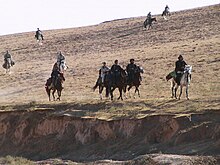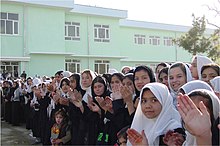
Abdul Rashid Dostum is an Afghan exiled politician, former Marshal in the Afghan National Army, founder and leader of the political party Junbish-e Milli. Dostum was a major army commander in the communist government during the Soviet–Afghan War, and in 2001 was the key indigenous ally to U.S. Special Forces and the CIA during the campaign to topple the Taliban government. He is one of the most powerful warlords since the beginning of the Afghan wars, known for siding with winners during different wars. Dostum has also referred to as a Kingmaker due to his significant role in Afghan politics.

Mazar-i-Sharīf, also known as Mazar-e Sharīf or simply Mazar, is the fourth-largest city in Afghanistan by population, with an estimated 500,207 residents in 2021. It is the capital of Balkh province and is linked by highways with Kunduz in the east, Kabul in the southeast, Herat in the southwest and Termez, Uzbekistan in the north. It is about 55 km (34 mi) from the Uzbek border. The city is also a tourist attraction because of its famous shrines as well as the Islamic and Hellenistic archeological sites. The ancient city of Balkh is also nearby.

The Dasht-i-Leili massacre occurred in December 2001 during the U.S. invasion of Afghanistan when 250 to 2,000 Taliban prisoners were shot and/or suffocated to death in metal shipping containers while being transferred by Junbish-i Milli soldiers under the supervision of forces loyal to General Rashid Dostum from Kunduz to Sheberghan prison in Afghanistan. The site of the graves is believed to be in the Dasht-e Leili desert just west of Sheberghan, in the Jowzjan Province.

Atta Muhammad Nur is an Afghan exiled politician and former militant who served as the Governor of Balkh Province in Afghanistan from 2004 to January 25, 2018. An ethnic Tajik, he worked to educate the Mujahideen after the 1979 Soviet invasion of Afghanistan, gaining the nickname "The Teacher". He then became a mujahideen resistance commander for the Jamiat-e Islami against the Soviets.
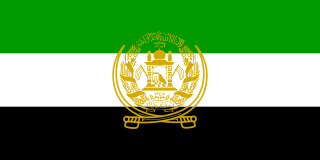
The Northern Alliance, officially known as the United Islamic National Front for the Salvation of Afghanistan, was a military alliance of groups that operated between early 1992 and 2001 following the dissolution of the Soviet Union, many non-Pashtun Northerners originally with the Republic of Afghanistan led by Mohammad Najibullah became disaffected with Pashtun Khalqi Afghan Army officers holding control over non-Pashtun militias in the North. Defectors such as Rashid Dostum and Abdul Momim allied with Ahmad Shah Massoud and Ali Mazari forming the Northern Alliance. The alliance's capture of Mazar-i-Sharif and more importantly the supplies kept there crippled the Afghan military and began the end of Najibullah's government. Following the collapse of Najibullah's government the Alliance would fall with a 2nd Civil war breaking out however following the Islamic Emirate of Afghanistan's (Taliban) takeover of Kabul, The United Front was reassembled.

Juma Khan Hamdard is an Afghan politician. He served as the security adviser to President Ashraf Ghani. He served as governor of Paktia Province from 2007 to 2015, previously serving as governor of Baghlan and later Jowzjan province. He is the head of the alliance of H.A.A Councils.

Shortly after the September 11 attacks, the United States declared the beginning of the war on terror and subsequently led a multinational invasion of Taliban-ruled Afghanistan. The stated goal was to dismantle al-Qaeda, which had executed the attacks under the leadership of Osama bin Laden, and to deny Islamist militants a safe base of operations in Afghanistan by toppling the Taliban government. The United Kingdom was a key ally of the United States, offering support for military action from the start of the invasion preparations. The American military presence in Afghanistan greatly bolstered the Northern Alliance, which had been locked in a losing fight with the Taliban during the Afghan Civil War. Prior to the beginning of the United States' war effort, the Taliban had seized around 85% of Afghanistan's territory as well as the capital city of Kabul, effectively confining the Northern Alliance to Badakhshan Province and smaller surrounding areas. The American-led invasion on October 7, 2001, marked the first phase of what would become the 20-year-long War in Afghanistan and was the technical start of the War on Terror.
Abdul Malik Pahlawan is an Afghan Uzbek warlord and politician based in Faryab Province in northern Afghanistan. He is the head of the Afghanistan Liberation Party and was heavily involved in the factional fighting that consumed Afghanistan throughout the 1990s. His rival for the control of the Uzbek north is Rashid Dostum, and their militias have clashed several times since the fall of the Taliban.

The 1992–1996 Afghan Civil War or the Fourth Afghan Civil War took place between 28 April 1992—the date a new interim Afghan government was supposed to replace the Republic of Afghanistan of President Mohammad Najibullah—and the Taliban's conquest of Kabul establishing the Islamic Emirate of Afghanistan on 27 September 1996.

The 1996–2001 Afghan Civil War or the Fifth Afghan Civil War took place between the Taliban's conquest of Kabul and their establishing of the Islamic Emirate of Afghanistan on 27 September 1996, and the US and UK invasion of Afghanistan on 7 October 2001: a period that was part of the Afghan Civil War that had started in 1989, and also part of the war in Afghanistan that had started in 1978.

The Battle of Qala-i-Jangi was a six-day military engagement following an uprising of prisoners-of-war who had been taken into custody by US-led coalition forces on November 25, 2001. The battle took place between November 25 and December 1, 2001, in northern Afghanistan. It followed the intervention by United States-led coalition forces to overthrow the Taliban's Islamic Emirate of Afghanistan, which had been harboring al-Qaeda operatives.
The following lists events that happened during 1997 in Afghanistan.

Kabul, capital of Afghanistan, fell in November 2001 to the Northern Alliance forces during the War in Afghanistan. Northern Alliance forces began their attack on the city on 13 November and made swift progress against Taliban and Al-Qaeda forces that were heavily weakened by American and British air strikes. The advance moved ahead of plans, and the next day the Northern Alliance forces entered Kabul and met no resistance inside the city. Taliban forces retreated to Kandahar in the south.

Qala-i-Jangi is a 19th-century fortress located near Mazar-i-Sharif in northern Afghanistan. It is known for being the site of a bloody 2001 Taliban uprising named the Battle of Qala-i-Jangi, in which at least 470 people were killed, including CIA agent Johnny "Mike" Spann. It served as Northern Alliance General Abdul Rashid Dostum's military garrison during the opening stages of the War in Afghanistan (2001–2021).

The National Islamic Movement of Afghanistan, sometimes called simply Junbish, was a Turkic political party in Afghanistan. Its founder is Marshal Abdul Rashid Dostum who created it in 1992 made from his loyalist remnants from the People's Democratic Party of Afghanistan's communist regime.
The Battles of Mazar-i-Sharif were a part of the Afghan Civil War and took place in 1997 and 1998 between the forces of Abdul Malik Pahlawan and his Hazara allies, Junbish-e Milli-yi Islami-yi Afghanistan, and the Taliban.

Mullah Noorullah Noori is the Minister of Borders and Tribal Affairs of the Islamic Emirate of Afghanistan since 7 September 2021. He was also the Taliban's Governor of Balkh Province during their first administration (1996–2001). Noorullah Noori spent more than 12 years in extrajudicial detention in the United States's Guantanamo Bay detention camps, in Cuba. Noori was released from the detention camp on May 31, 2014, in a prisoner exchange that involved Bowe Bergdahl and the Taliban Five, and flown to Qatar.
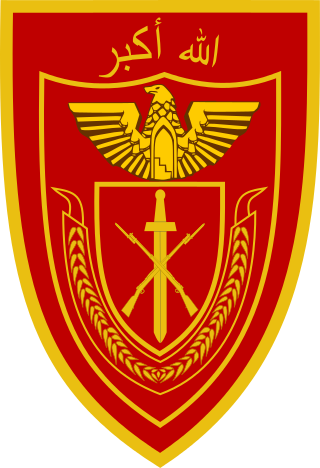
The 209th 'Shaheen' (Falcon) Corps was a corps, or military district, of the Afghan National Army. Its headquarters, Camp Shaheen, was at Mazar-i-Sharif, Balkh Province. It worked closely with the German-led Resolute Support Mission TAAC North, and had its 1st Brigade at Mazar-i-Sharif and a Second Brigade at Kunduz. A United States Army Corps of Engineers solicitation for Kunduz headquarters facilities for the Second Brigade was issued in March 2008. The corps was supported by the Mazar-i-Sharif Regional Support Squadron of the AAF, equipped with eight helicopters: four transport to support the Corps' commando battalion, two attack, and two medical transport helicopters. In October 2015, as a response to the Battle of Kunduz, reports came that a new division would be formed in the area.
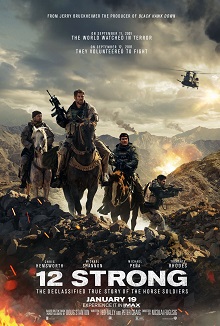
12 Strong is a 2018 American action-war film directed by Nicolai Fuglsig and written by Ted Tally and Peter Craig. The film is based on Doug Stanton's non-fiction book Horse Soldiers, which tells the story of U.S. Army Special Forces sent to Afghanistan immediately after the September 11 attacks. The film stars Chris Hemsworth, Michael Shannon, Michael Peña, Navid Negahban, Trevante Rhodes, Geoff Stults, Thad Luckinbill, Ben O'Toole, William Fichtner, and Rob Riggle.


